Photos: Asteroid Vesta and NASA's Dawn Spacecraft
Extremely Bright Area on Vesta
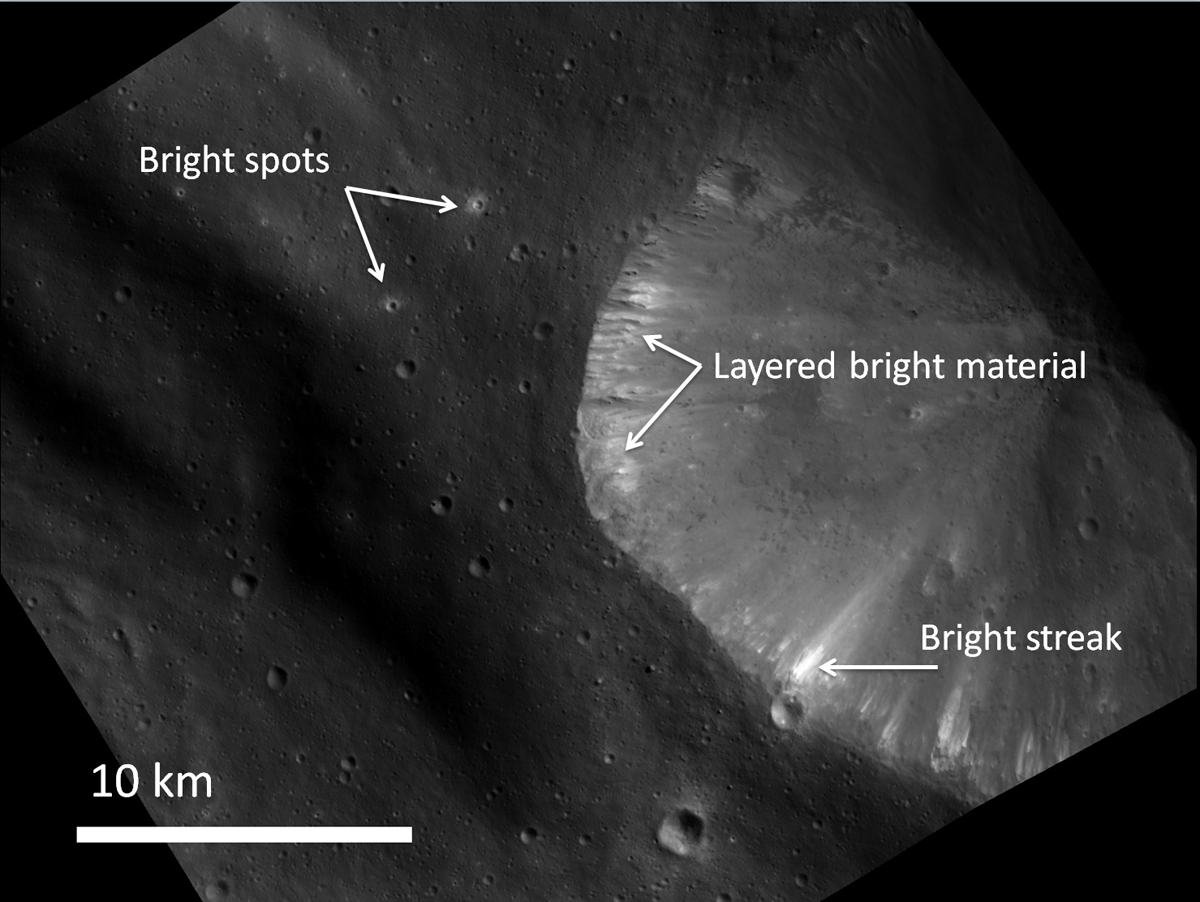
This image from NASA's Dawn spacecraft shows the brightest area seen on Vesta so far. The image is part of a set of images taken by Dawn's framing cameras on Dec. 27, 2011. [Full Story]
Bright Rays from Canuleia Crater
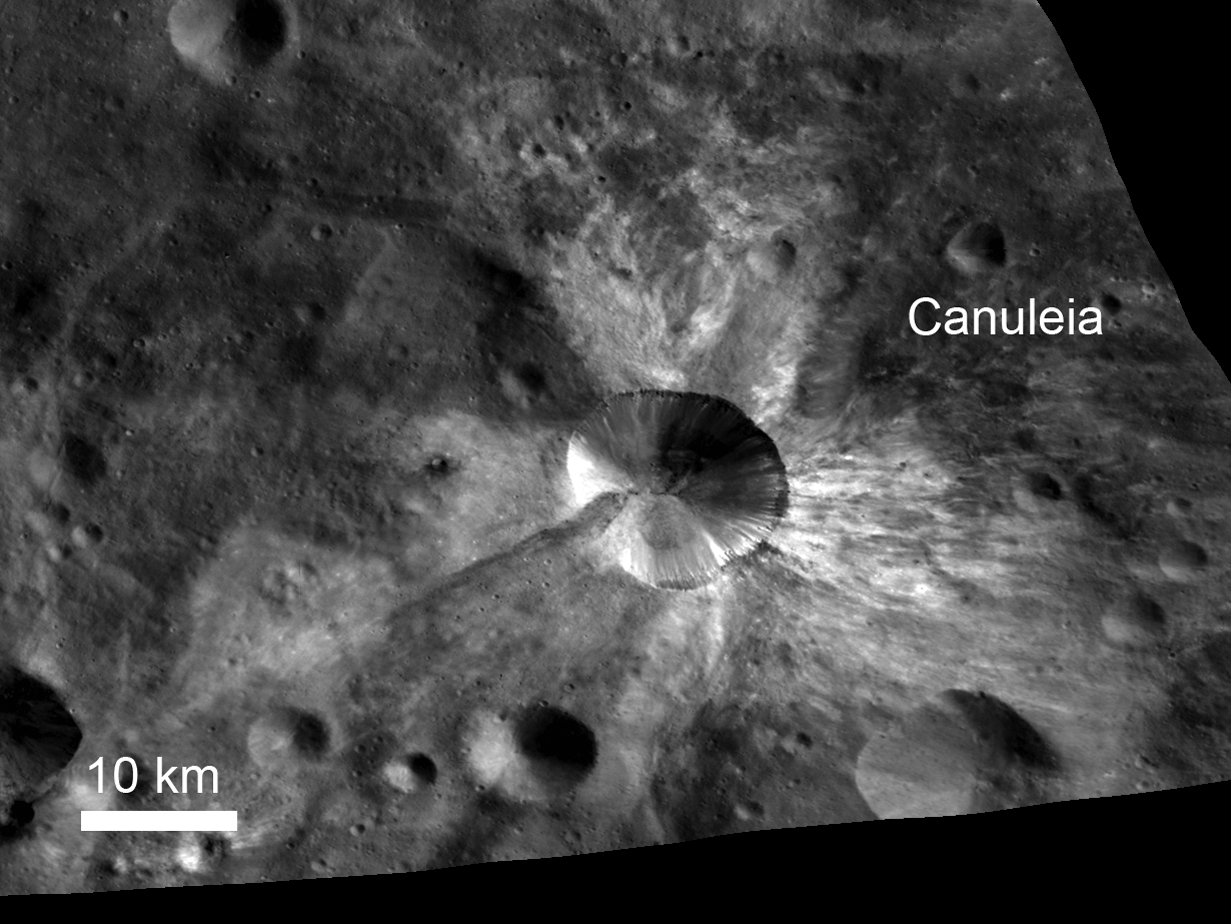
In this image from NASA's Dawn spacecraft, bright material extends out from the crater Canuleia on Vesta. This image was obtained by Dawn's framing camera on Oct. 25, 2011. [Full Story]
Bright Material at Numisia Crater
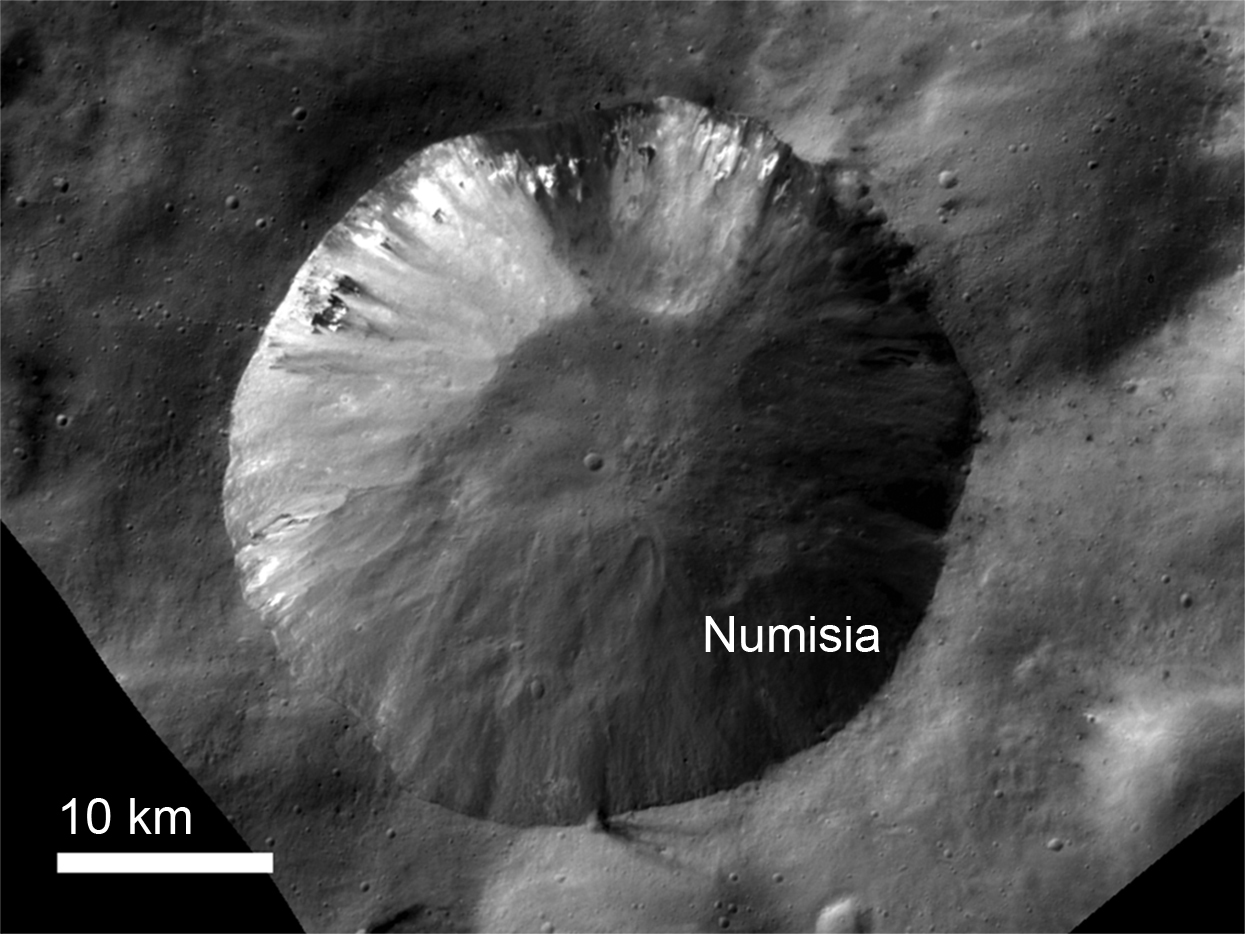
This image from NASA's Dawn spacecraft shows the crater Numisia, located just south of the equator in the Numisia quadrangle on Vesta. The image was obtained by Dawn's framing camera on Oct. 21, 2011. [Full Story]
Dark Materials at the Snowman
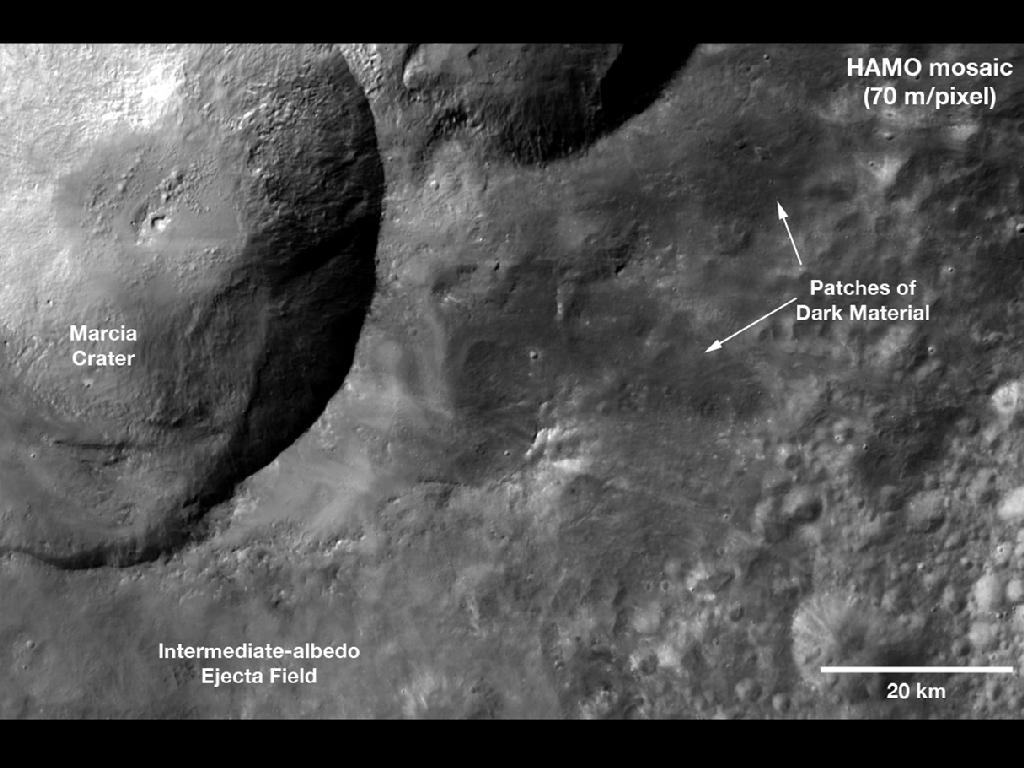
This mosaic from NASA's Dawn spacecraft shows dark material near a series of craters known as the "snowman" on Vesta. That ejected material is a complex mixture of components. They likely include both dark material thrown out from the craters during the impacts that created them (ejecta), and darker melt that occurred during the impact. The images were obtained from Oct. 11 to 16, 2011. [Full Story]
Northern Shadow on Asteroid Vesta
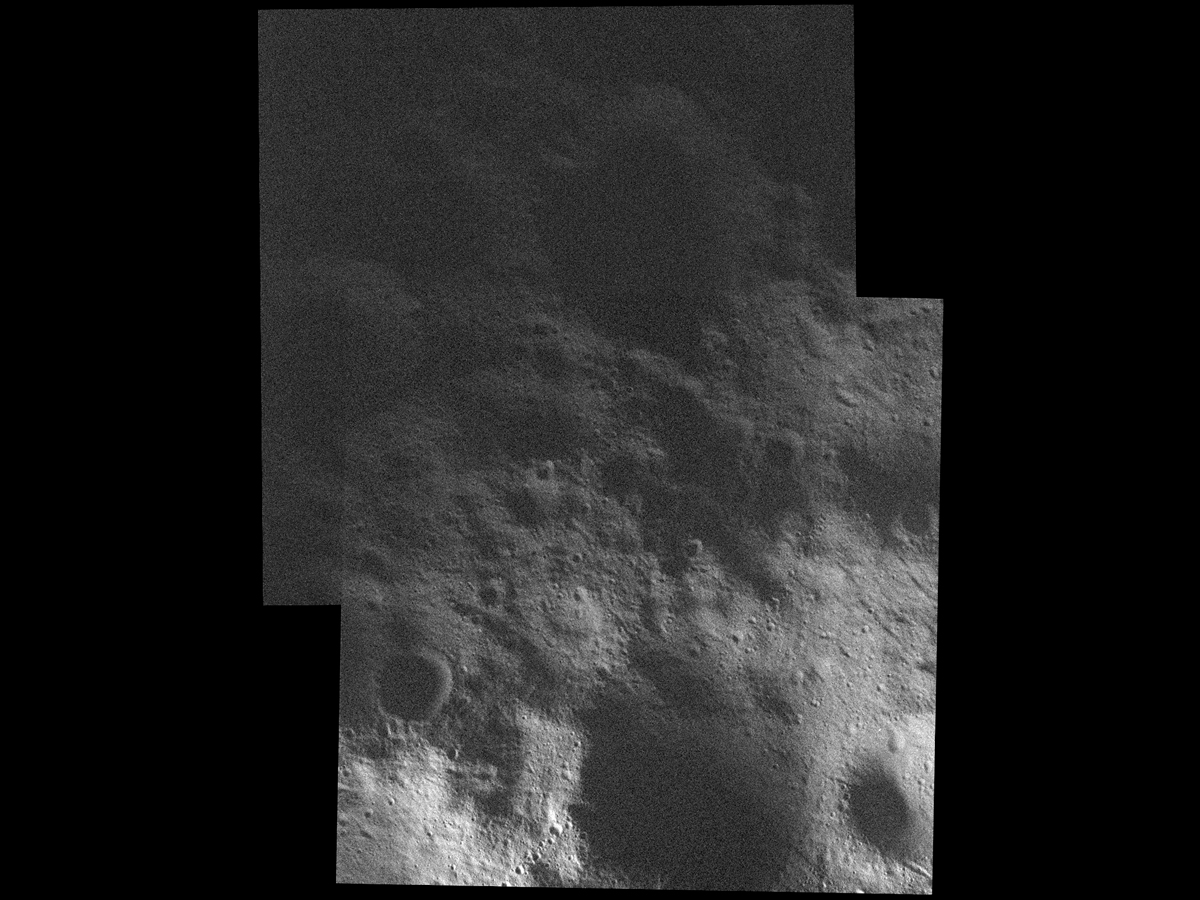
This mosaic of the surface of Vesta was made from images obtained by NASA's Dawn spacecraft on Feb. 5, 2012, while the area was entirely in the sun's shadow.
Dark-Rayed Crater and Spots
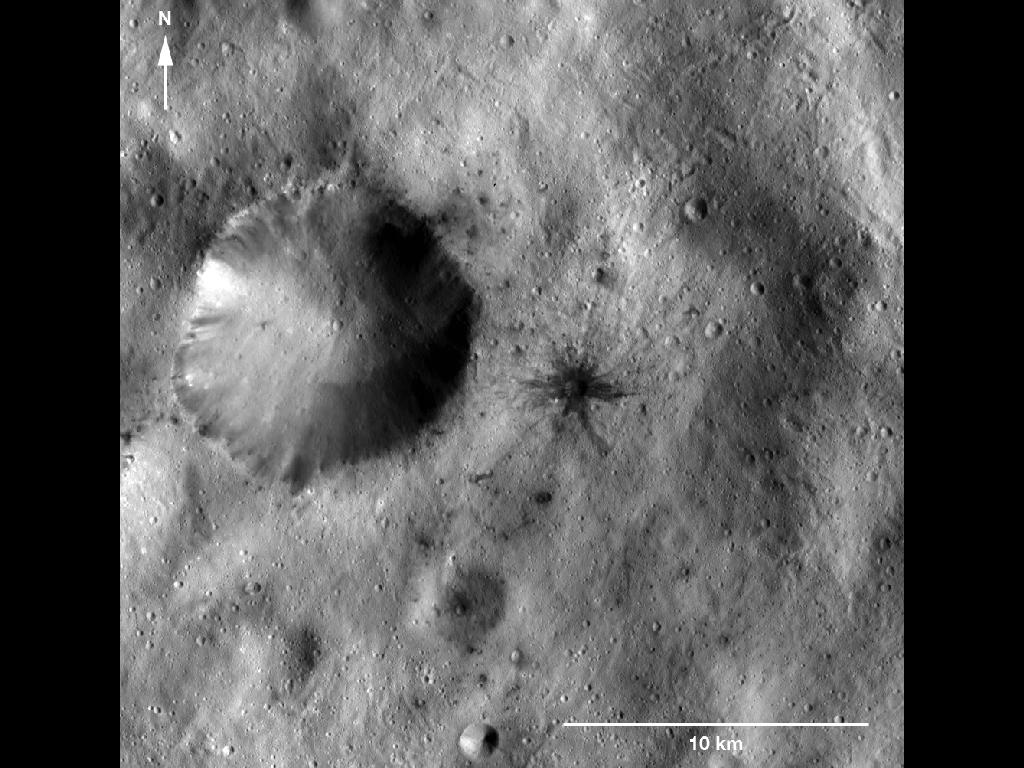
This image of a dark-rayed impact crater and several dark spots was obtained by NASA's Dawn spacecraft. The dark materials are located near an older, larger crater in the Sextilia quadrangle of Vesta's southern hemisphere. This image was taken by Dawn's framing cameras on January 8, 2012.
Wall of Rheasilvia
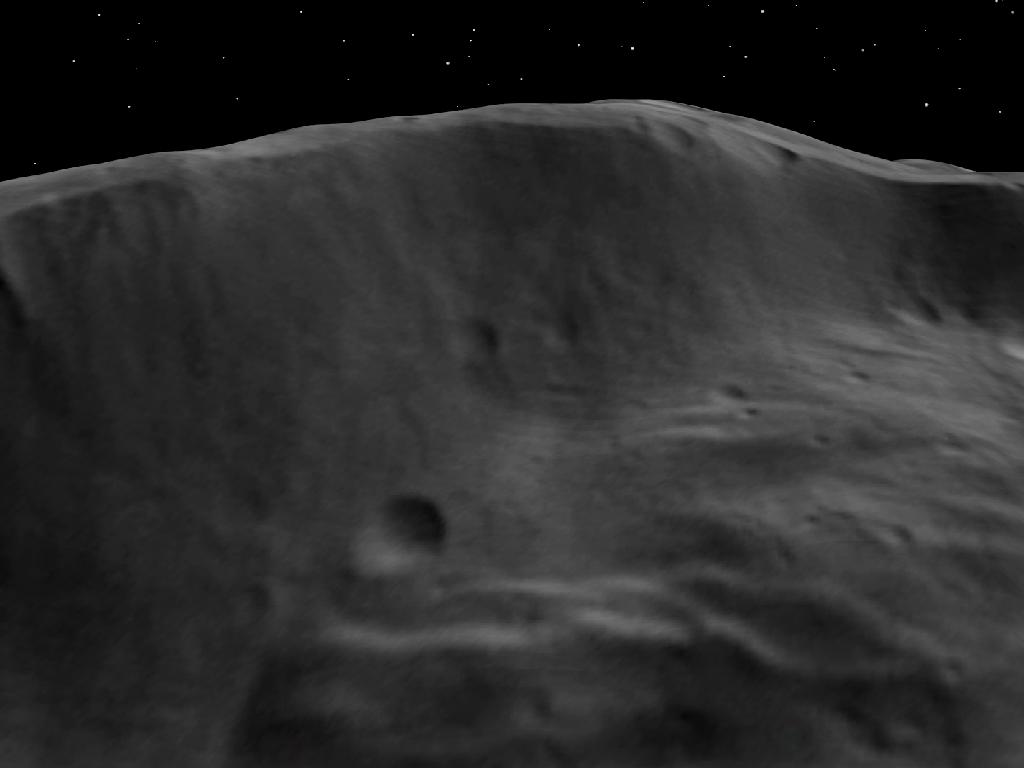
This still from an animation made from data obtained by NASA's Dawn spacecraft shows the topography of a portion of the wall and interior of the Rheasilvia impact basin (310 miles or 500 kilometers in diameter) in Vesta's south-polar region. This basin affected Vesta's global shape and geology. Image released March 20, 2012.
Get the Space.com Newsletter
Breaking space news, the latest updates on rocket launches, skywatching events and more!
Caparronia Crater on Vesta Asteroid
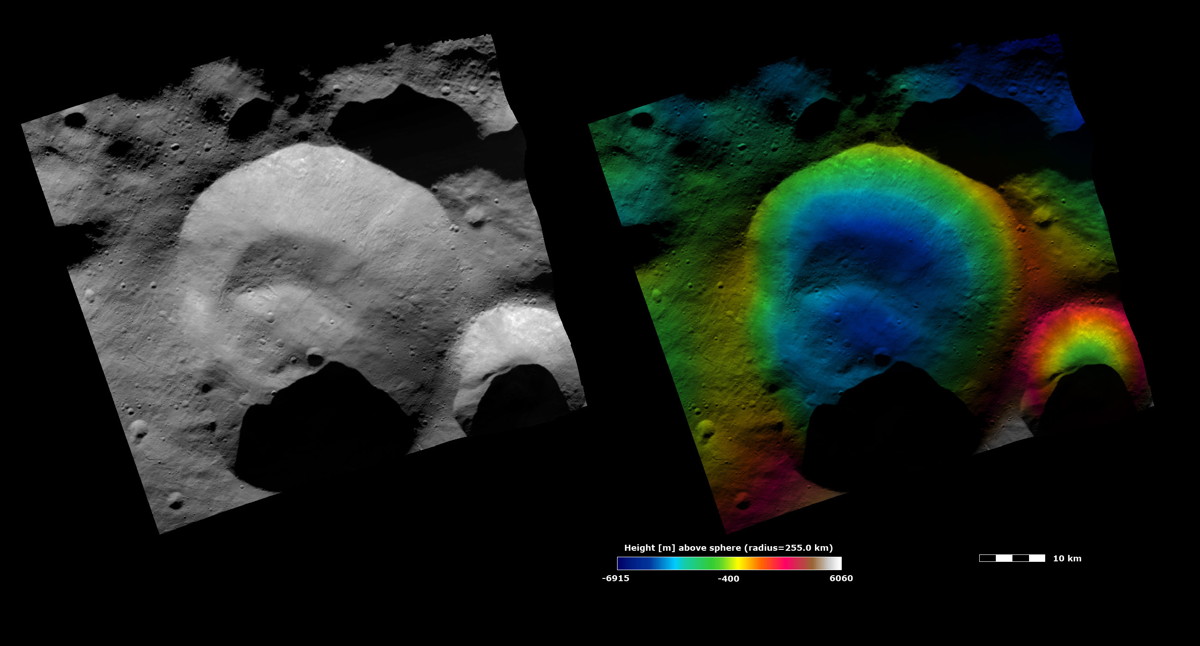
These Dawn FC (framing camera) images show Caparronia crater, after which Caparronia quadrangle is named. The left image is a brightness image, which is taken directly through the clear filter of the FC and shows the brightness and darkness of the surface. The right image uses the same brightness image as its base but then a color-coded height representation of the topography is overlain onto it. NASA's Dawn spacecraft obtained this image with its framing camera on Oct. 23, 2011.
Bright Spots Near Marcia
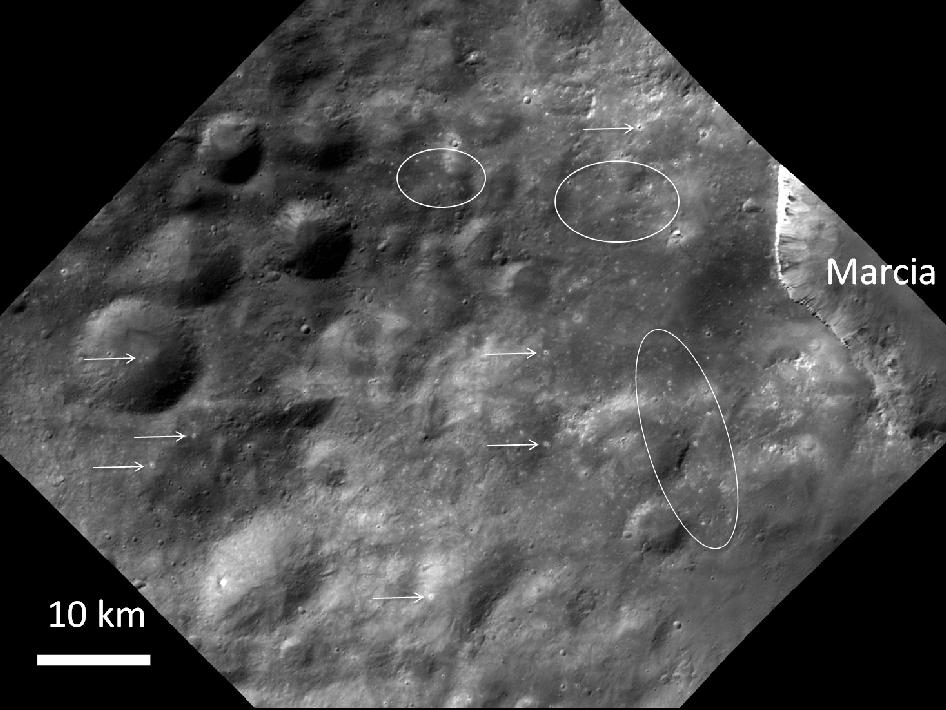
Numerous small, bright spots appear on Vesta, as seen in this image from NASA's Dawn spacecraft. This particular image was taken on Oct. 28, 2011.
Giant Asteroid Vesta
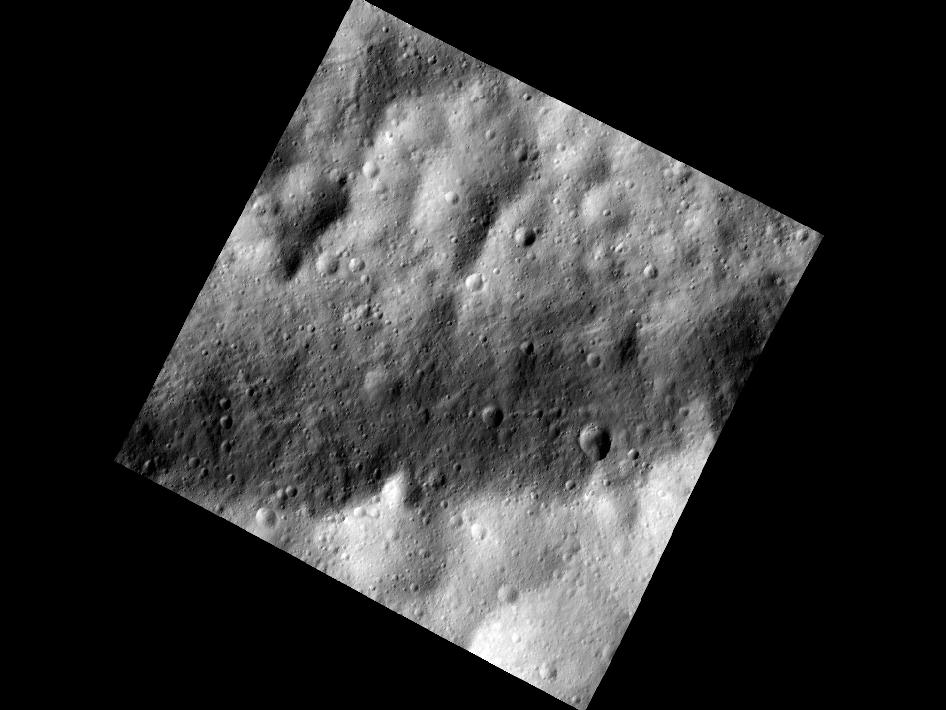
This close-up photo of the asteroid Vesta taken by NASA’s Dawn spacecraft shows a part of one of the troughs at the equator of the asteroid. In the image, the floor of one of the equatorial troughs appears as the brighter deposit at the bottom of this image, contrasted against the darker band of the trough edge.
Join our Space Forums to keep talking space on the latest missions, night sky and more! And if you have a news tip, correction or comment, let us know at: community@space.com.

Space.com is the premier source of space exploration, innovation and astronomy news, chronicling (and celebrating) humanity's ongoing expansion across the final frontier. Originally founded in 1999, Space.com is, and always has been, the passion of writers and editors who are space fans and also trained journalists. Our current news team consists of Editor-in-Chief Tariq Malik; Editor Hanneke Weitering, Senior Space Writer Mike Wall; Senior Writer Meghan Bartels; Senior Writer Chelsea Gohd, Senior Writer Tereza Pultarova and Staff Writer Alexander Cox, focusing on e-commerce. Senior Producer Steve Spaleta oversees our space videos, with Diana Whitcroft as our Social Media Editor.









